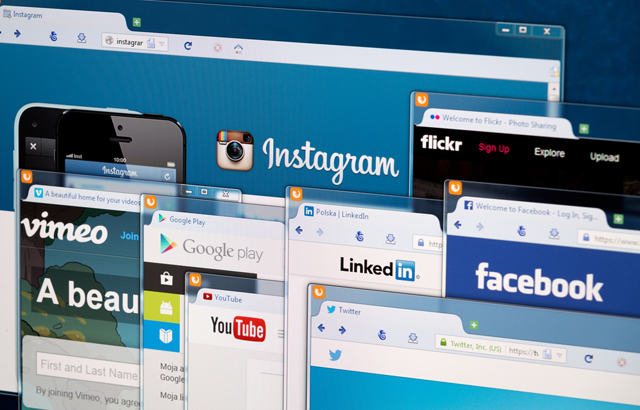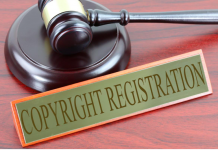This article is written by Maaz Akhtar Hashmi, a student, Faculty of Law, AMU. This is an exhaustive article that aims to explain different aspects of social media & copyright.
Table of Contents
Introduction
In copyright, Fair Use is a limitation on the rights by a copyright owner to keep others from reproducing or using their work. This limitation on the tight hold of those rights is a way for the law to acknowledge that sometimes it’s not fair to allow the owner of the work to restrict its use. Let others play with it too. Often that use pertains to the public good.
Generally, exceptions and limitations to copyright are subject to a three-step test set out in the Berne Convention for the Protection of Literary and Artistic Works. Briefly stated, the Berne Convention provides that an exception or limitation to copyright is permissible only if:
- it covers special cases,
- it does not conflict with the normal exploitation of the work,
- it does not unreasonably prejudice the legitimate interests of the author.
Standard exceptions and limitations vary from country to country in their number and scope.
Provisions under the Copyright Act, 1957
In India, the provisions of Section 52 of the Copyright Act, 1957 provide for certain acts, which would not constitute an infringement of copyright namely fair dealing with a literary, dramatic, musical or artistic work not being a computer program for the purposes of:
- private use, including research;
- criticism or review;
- reporting current events in any print media or;
- by broadcast or in a cinematographic film or by means of photographs;
- reproduction for the purpose of a judicial proceeding or of a report of a judicial proceeding;
- reproduction or publication of a literary, dramatic, musical or artistic work in any work prepared by the Secretariat of a Legislature or, where the Legislature consists of two Houses, by the Secretariat of either House of the Legislature, exclusively for the use of the members of that Legislature;
- the reproduction of any literary, dramatic or musical work in a certified copy made or supplied in accordance with any law for the time being in force;
- the reading or recitation in public of any reasonable extract from a published literary or dramatic work;
- the publication in a collection, mainly composed of non-copyright matter, bona fide intended for the use of educational institutions;
- the making of sound, if made by or with the license or consent of the owner of the right in the work.
Doctrine of Fair-Use
The term “fair dealing” has not been defined in the Act. It is a legal doctrine, which allows a person to make limited use of copyrighted work without the permission of the owner.
Whether a person’s use of copyright material is “fair” would depend entirely upon the facts and circumstances of a given case. The line between “fair dealing” and infringement is a thin one. In India, there are no set guidelines that define the number of words or passages that can be used without permission from the author. Only the Court applying basic common sense can determine this. It may, however, be said that the extracted portion should be such that it does not affect the substantial interest of the Author. Fair dealing is a significant limitation on the exclusive right of the copyright owner. It has been interpreted by the courts on a number of occasions by judging the economic impact it has on the copyright owner. Where the economic impact is not significant, the use may constitute fair dealing.
Factors
The fair nature of the dealing depends on the following four factors:
- the purpose of use,
- the nature of the work,
- the amount of the work used,
- the effect of the use of the work on the original.
There are four main factors that are considered when determining if the use is a copyright infringement or if it falls under the fair use doctrine:
- The purpose and character of the usage: This factor looks at whether the use is for a commercial purpose or whether it is primarily educational. Educational uses are more likely to be considered fair use, so posting a brief excerpt from an academic journal on a college class website would most likely be acceptable.
- The nature of the copyrighted work: A quote taken from a textbook and shared in an online study group would be more likely to be fair use than posting someone else’s cat video on your personal feed because the textbook, but not the cat video, is educational in nature, as is the use.
- How much of the work is used in relation to its length? A 10-second clip of a two-hour movie posted on Instagram is more likely to be considered fair use than reposting a full three-second meme because the former is a smaller percentage of the overall work.
- How the use impacts the market or value of the work? If reuse makes it harder for the creator to sell or license the work, it’s likely not to be fair use. For example, pasting the entire text of a blog post on your Facebook timeline might cause the author to lose clicks or traffic and may also make it harder for the author to resell that work elsewhere, which would make the situation fall outside the criteria of fair use.
Social Media & Copyright
A copyright protects the owner of one kind of intellectual property (created by an individual but having no form or substance). Only certain kinds of works which fall within the U.S. Copyright Act can be copyrighted.
The copyright process has become fairly simple with traditional works like books, plays, movies, and theatre. But copyright is a little more difficult with the advent of the internet.
For example, bloggers must be aware of what they write, to avoid copyright, trademark, and libel issues. And before you use an image from the internet you need to be sure to get a license or find public domain images. This article looks specifically at various social media sites and their copyright policies.

How Copyright works with Social Media
When you post your creative work on social media, you continue to own the copyright, if the work is eligible, for example, tweets on Twitter. No one can use the work without your permission, nor does the platform take ownership. However, there is an exception: by posting on a platform such as YouTube or Twitter, you are agreeing to the site’s terms of use, which often give the site a license to use your work. More importantly, you are also allowing other users to share the work within the platform (if your settings are configured to allow shares). As a user of social media, you need to understand the terms of service you are agreeing to and then comply with them.
Posting your work on social media does not mean that others can use it without attribution. For example, if you create a meme and post it to Twitter, other users can retweet it. However, if someone merely copies the meme, without attribution, and posts it on their own feed or even somewhere outside of social media, it does not automatically constitute fair use and most likely does not comply with the terms of service for the platform.
It is also important to understand that you cannot post a copyrighted work to a social media site without permission. Courts have held that the mere act of posting a photograph online, for example, is not transformative. Users should post only creative works that are in the public domain, works that qualify for fair use, work for which they have received permission to post, or their own work.
Because copyright is created as soon as you produce work, you do not have to post a copyright notice with your work. However, if you are posting work to social media, it can be useful to include a copyright notice, such as ©2019 Bob Jones, as a reminder to other users that you own it.
Because copyright and social media is an evolving area, it’s important that users pay attention to changes in the law. To protect your creative interests, registering your copyright is advisable.
Now, let us have a look at some of the famous social media platforms where the users post stuff and how the third parties are debarred from using this content exhaustively while in other cases the concerned third party without any restrictions can use posts, images and write-ups created by others. So, it really depends as to what is the content and where it is published. The platforms which are in popular use, now, include Facebook, Instagram, Whatsapp, Pinterest, Twitter, Quora, LinkedIn and many more as such where such copyright violations take place. It is a matter of great concern and measures should be taken to curb these practices.
Social media, like Facebook, Twitter, and Pinterest, allow online posting of material that may be copyrighted. The social media site does not own the work that has been posted on their site; the copyright is still retained by the owner. But by agreeing to post works on the site, you sign an agreement that gives the site a license to use the work. In these cases, the license is given without payment.
Twitter and Copyright
The Twitter Terms of Service state that:
You retain your rights to any Content you submit, post or display on or through the Services. By submitting, posting or displaying Content on or through the Services, you grant us a worldwide, non-exclusive, royalty-free license (with the right to sublicense) to use, copy, reproduce, process, adapt, modify, publish, transmit, display and distribute such Content in any and all media or distribution methods (now known or later developed).
In other words, Twitter users grant Twitter a license to make Tweets available to other Twitter users.
Facebook and Copyright
The Facebook Terms are similar, stating that you (the Facebook user) own “all of the content and information you post on Facebook, and you can control how it is shared through your privacy and application settings.” In addition, for content protected by intellectual property rights, you grant us a non-exclusive, transferable, sub-licensable, royalty-free, worldwide license to use any IP content that you post on or in connection with Facebook (IP License). When you leave Facebook, all content is deleted.
Pinterest and Copyright
Pinterest is a social media site that allows members to post photos from their websites and other places. Pinterest’s terms of service says that Pinterest does not take your copyright to photos. But, by signing up for Pinterest and agreeing to their terms and privacy notice, you have agreed to give Pinterest a non-exclusive, royalty-free, transferable, sublicensable, worldwide license to use, display, reproduce, re-pin, modify (e.g., re-format), rearrange, and distribute your user content on Pinterest for the purposes of operating and providing the service to you and to our other users.
In other words, Pinterest can use your content on its site because you have agreed to give them a license to use it as described in this agreement, without payment. The Pinterest copyright statement includes a link where you can file a complaint against someone you feel has violated your copyright.
Protecting Your Own Content on Social Media
The best way to protect your intellectual property from being appropriated on social media is to not put it up there in the first place. Although you own the content you place on one of these social media sites, you have granted a license to the media site to use the content and for others to view it.
To protect content, include a copyright statement on the file for photos. And be aware that your property might get appropriated by someone (not associated with the social media site). You must be vigilant to keep track of possible violations and be quick to file complaints. If you are not vigilant, you may not be able to support your claims in a lawsuit.
Who owns the Content on Social Media?
There is a general-albeit mistaken-belief that everything that is on social media sites and, on the Internet, maybe used freely to the extent that everything that is found there is usually freely accessible and easily available, and also free of charge. Many believe that all the content posted on social media ‘belongs to everyone and is free for all’. However, this is not the case. When content is posted on social media sites (either on a person’s user profile or on the page related to a product brand or a company), it is simply being published. But this does not mean that the rights of social media users are automatically assigned to others to allow anyone to use the content as they see fit.
The confusion regarding this situation may be influenced, or even caused, by the fact that social media sites include a ‘limitation of intellectual property rights’ in their terms of use, which are agreed to by users upon registration. But these licences on intellectual property rights are limited in scope. They are usually non-exclusive and authorise the use of the content posted by users on social media sites by social media or by other users. Nevertheless, a key point is that the content is normally authorised to be used only within the social media site or in connection with it, or with the services provided by it. Therefore, no other use or purpose is permitted. The terms of the licences applied by each of the social media sites must be considered in order to confirm the authorised uses in each case and at any given time.
Infringement of Copyright
In light of the above, as it is to be expected, there are constant infringements of intellectual property rights. The content posted by users on social media sites including mainly videos, photos, songs, illustrations, etc. are used by third parties on a daily basis, both by individuals and companies, whether or not they are users of social media, without being previously authorised by the owner of the rights. This practice constitutes a violation of the intellectual property rights inherent to such content.
Posting Photographs on Social Media
As a matter of example, the use of third party photographs was precisely the subject of a lawsuit in the United States which resulted in a judgment of liability for copyright violation. It was the dispute between Haitian photographer Daniel Morel and press agencies Agence France Presse and Getty Images. The facts were that Daniel Morel, who was in Haiti at the time of the earthquake in 2010, took several photographs there and posted them on his TwitPic account, the Twitter application for users to share images. Through a third user, the referred press agencies had access to the images and sold them to media companies around the world, without the authorisation of the photographer and without mentioning him as the author of the same.
The matter in the court lasted 3 years, with the subsequent costs, and the federal jury presided over by Judge Alison Nathan finally ordered the agencies to pay $1,200,000 as compensation for violation of intellectual property rights. Copyright was deemed to have been infringed precisely on the grounds that, contrary to the argument posed by the agency (that everything that is published on Twitter may be used without any authorisation being required), Twitter‘s licences do not include the right to use users’ content for commercial purposes.
Similar situations have also taken place in Spain. For example, there have been several cases in which companies in the fashion industry have used photographs that they had found on Instagram without the authorisation of their respective authors and printed them on some of the clothes in their collections. These matters, although they have not reached the court system, have been the object of claims submitted by the authors involved and resulted in settlement agreements, including, in some cases, a public apology by the companies for their unauthorised use of photographs. The repercussion of these disputes, both on social media sites and on the general media, may have a serious impact on the image and reputation of the companies involved.
Consequently, even though it may seem obvious to say that authorisation must be requested to use third party content, reality shows that infringements are very often committed.
Twitter and Tweets
So far reference has been made to the content posted by users and shared on social media, such as photographs, videos, illustrations, texts, etc. which in principle are deemed to be protected by intellectual property rights.
However, what about messages created and posted by users on social media sites? We are talking about, for example, messages posted on Facebook or tweets in the case of Twitter. These messages are usually very short and, although they are contents created by users, it is not so clear whether they must be considered to be worthy of protection.
The debate on this question recently started on the basis of the following issue: only a few days ago, a prestigious publishing company decided to withdraw from the market its book entitled “Les Perles des Tweets et du net”. The book consisted of a compilation of tweets which, apparently, the company was about to publish without having obtained the authorisation of the authors. Besides, the tweets were reportedly going to be published with no indication of the authors’ names, which would not only have affected their economic rights but also their moral rights. In view of the irate reactions apparently triggered by the announcement of the publication of this book, the company has seen no other option but to publicly announce the withdrawal of the book from the market. Furthermore, the publisher announced such withdrawal through its Twitter account.
A debate on the matter is assured: Can we really consider tweets to be works subject to copyright protection? That is, do tweets meet the necessary requirements to that effect?
Let us remember that tweets are short messages that cannot exceed 140 characters. This obviously greatly limits the authors’ freedom to create them and questions whether tweets can meet the legal requirements to be protected by copyright, namely, a level of creativity and originality. Given the exceedingly short length of tweets, the threshold of the level of creativity and originality required in these cases would be extremely low. Consequently, it is not clear whether a tweet would ultimately deserve the same protection as other literary works.
Despite the above, and even though this is still an arguable issue, in order to avoid a potential judgment against it, the publisher decided to withdraw its compilation of tweets from the market, given the lack of case law on the matter to date.
Conclusion
One thing is clear that when we operate through social media, we must be aware that intellectual property law applies to any contents that meet the necessary requirements to be considered works capable of being protected. In other words, the same law that we apply to the analogical world is also applicable to the online world in the context of social media sites. Apparently, the prestigious publisher referred to above temporarily forgot about it.
LawSikho has created a telegram group for exchanging legal knowledge, referrals and various opportunities. You can click on this link and join:
https://t.me/joinchat/J_0YrBa4IBSHdpuTfQO_sA
Follow us on Instagram and subscribe to our YouTube channel for more amazing legal content.
 Serato DJ Crack 2025Serato DJ PRO Crack
Serato DJ Crack 2025Serato DJ PRO Crack










 Allow notifications
Allow notifications



